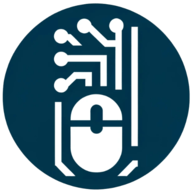4 Software Trends Businesses Should Prioritize Learning About
In a rapidly evolving business landscape, staying ahead of the curve is crucial. Industry leaders such as a CTO and a Director share their invaluable insights on the top software trends businesses should prioritize. The article begins with a CTO recommending the adoption of an Internal Developer Platform and concludes with a Founder advising on the use of Predictive Analytics for Demand Forecasting. Read on to discover a total of four expert opinions that can transform your business strategy.
- Adopt an Internal Developer Platform
- Prioritize AI-Driven Automation Tools
- Implement AI-Powered Business Tools
- Utilize Predictive Analytics for Demand Forecasting
Adopt an Internal Developer Platform
If I were to recommend one software trend for businesses to prioritize, it would be the adoption of an Internal Developer Platform (IDP) to abstract technology complexity and enable the development of a business-service platform. As organizations strive to deliver seamless digital experiences, the focus should shift from managing infrastructure and tools to creating value for end users. By leveraging an IDP, companies can streamline the software-development lifecycle, reducing the cognitive load on developers and allowing them to concentrate on building features that drive business outcomes.
The key here is to provide a 'platformless' experience where developers can focus purely on coding and delivering business functionality without getting bogged down by underlying technical complexities. An effective IDP abstracts away the intricacies of infrastructure, CI/CD pipelines, and cloud configurations, offering self-service capabilities that accelerate innovation. This approach ensures that development teams are more productive and can deliver new features faster, ultimately resulting in a better end-user experience.
For organizations looking to get started, I would recommend exploring IDP-as-a-Service (IDPaaS) options as a quick way to leverage the benefits without the overhead of building everything from scratch. This allows businesses to get up and running quickly, focusing on what truly matters: developing business-specific services that add value. For those with more mature engineering teams, an internally built IDP led by a platform engineering team can be a strategic investment. This way, companies can tailor the platform to their unique needs while still reaping the benefits of abstraction and automation.
In either case, the focus should remain on reducing complexity for developers and aligning technology with business objectives. By building a robust business-service platform on top of an IDP, companies can achieve faster time-to-market, greater agility, and enhanced digital experiences for their users.
Prioritize AI-Driven Automation Tools
I'd recommend businesses prioritize learning about AI-driven automation tools. These technologies can streamline repetitive tasks, improve decision-making, and enhance customer experiences. By integrating AI into areas like customer service, marketing automation, and inventory management, businesses can save time and reduce errors. To get started, I suggest focusing on one area where automation could have the most immediate impact—like using chatbots for customer support or AI for data analysis. Begin by researching tools that align with your needs, invest in user-friendly platforms, and train your team to fully leverage these technologies. Start small, measure impact, and scale as you see the benefits.

Implement AI-Powered Business Tools
AI-powered tools are transforming how businesses operate, helping them save time and make smarter decisions. By using AI, companies can automate tasks, analyze data more effectively, and create better customer experiences, which leads to more growth and efficiency.
To get started, identify one or two routine tasks that could be automated, and research AI tools designed for your industry. Begin with a small test project to see how it works, and make sure your team is trained to use the new tools effectively.

Utilize Predictive Analytics for Demand Forecasting
The software trend I recommend is predictive analytics, especially for businesses in retail or seasonal industries like floristry. As an experienced florist with over a decade in the industry, I've seen the impact predictive analytics has had on reducing waste and improving profitability. For instance, we use it to anticipate demand for specific flowers during holidays and events. This minimizes overstocking and ensures we can meet customer needs without running out of popular options.
To get started, businesses should explore accessible tools like Google Analytics or AI platforms like Tableau. Begin with a specific focus, such as analyzing past sales data to predict demand for upcoming events. Start small, refine the model with feedback, and gradually expand to include other variables like weather patterns or local celebrations.
The biggest benefit is how it reduces uncertainty in decision-making. By understanding patterns and trends, businesses can save costs, streamline operations, and deliver exactly what the customer wants—something we've successfully achieved in our shop.


